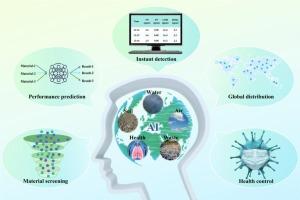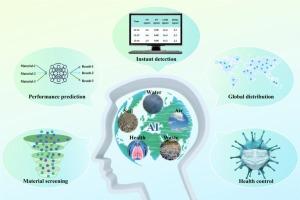环境研究与健康中的人工智能技术:发展与展望
IF 9.7
1区 环境科学与生态学
Q1 ENVIRONMENTAL SCIENCES
引用次数: 0
摘要
随着环境领域的研究不断深入,传统的研究范式已经显得不足。人工智能技术的引入,为“绿色科技革命”提供了清晰的定义。与传统方法相比,人工智能在环境数据分析中的计算效率有了显著提高,决策时间减少了60%以上。这有效地支持了复杂环境问题的高效解决。与此同时,人工智能技术的跨越式发展正在引发一场环境研究领域的绿色技术革命。基于这一调查和正在发展的数字催化平台,本文系统总结了人工智能在五大领域的典型应用:水污染处理、大气污染控制、固体废物处置、土壤修复和环境健康。它侧重于分析通过机器学习(ML)方法展示的人工智能的显着有效性。这种有效性体现在物料筛选、性能预测、即时检测、污染物全球分布模拟、人体健康控制等方面。值得注意的是,当前人工智能技术在环境领域的大规模应用仍面临多重挑战,特别是复杂环境系统中数据样本的稀缺性。例如,小样本模型容易过拟合,全球污染物分布预测中观测数据的地理覆盖不均匀。这些问题都迫切需要解决。针对上述瓶颈,本研究提出了相应的解决方案。随着技术瓶颈的逐步突破,人工智能有望成为推动环境可持续发展的核心动力,为实现“双碳”目标和全球生态系统的恢复做出贡献。本文章由计算机程序翻译,如有差异,请以英文原文为准。


Artificial intelligence technology in environmental research and health: Development and prospects
As the research in the environmental field continues to delve into deeper mechanisms, the traditional research paradigm has become inadequate. The introduction of artificial intelligence technology has provided a clear definition for the “green technology revolution”. Compared with traditional methods, AI has achieved a significant improvement in computational efficiency in environmental data analysis, reducing decision-making time by more than 60%. This effectively supports the efficient resolution of complex environmental issues. Meanwhile, the rapid leap-forward development of artificial intelligence (AI) technology is giving rise to a green technological revolution in environmental research. Based on this survey and the developing Digital Catalysis Platform, this commentary systematically summarizes the typical applications of AI in five major areas: treatment of water pollution, control of air pollution, disposal of solid waste, remediation of soil, and environmental health. It focuses on analyzing the remarkable effectiveness demonstrated by AI through machine learning (ML) methods. Such effectiveness is shown in aspects like material screening, performance prediction, instant detection, global distribution simulation of pollutants, and the control of human health. Notably, the current large-scale application of AI technology in the environmental field still faces multiple challenges, especially the scarcity of data samples in complex environmental systems. For instance, small-sample models to overfit, and the uneven geographical coverage of observational data in global pollutant distribution prediction. They all urgently need to be solved. In response to the above-mentioned bottlenecks, this study proposes corresponding solutions. As the technological bottlenecks are gradually overcome, AI is expected to become the core driving force for promoting environmentally sustainable development and contribute to the achievement of the “dual carbon” goals and the restoration of the global ecosystem.
求助全文
通过发布文献求助,成功后即可免费获取论文全文。
去求助
来源期刊

Environment International
环境科学-环境科学
CiteScore
21.90
自引率
3.40%
发文量
734
审稿时长
2.8 months
期刊介绍:
Environmental Health publishes manuscripts focusing on critical aspects of environmental and occupational medicine, including studies in toxicology and epidemiology, to illuminate the human health implications of exposure to environmental hazards. The journal adopts an open-access model and practices open peer review.
It caters to scientists and practitioners across all environmental science domains, directly or indirectly impacting human health and well-being. With a commitment to enhancing the prevention of environmentally-related health risks, Environmental Health serves as a public health journal for the community and scientists engaged in matters of public health significance concerning the environment.
 求助内容:
求助内容: 应助结果提醒方式:
应助结果提醒方式:


